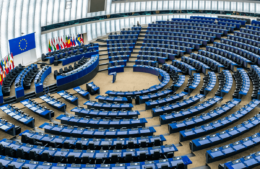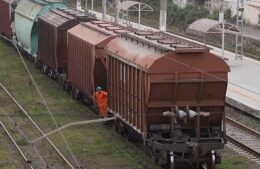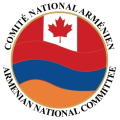Aleppo’s water crisis adds to local suffering
- (0)
\n
Aleppo’s water crisis adds to local suffering –
\n
\n

\n
\n
ALEPPO, Syria — Aside from the horrors of indiscriminate targeting and bombing of civilians, Aleppans have had to endure orchestrated campaigns of sieges and deliberate starvation. A crumbling infrastructure and collapsed public services mean that for many, what once were basics were now luxury items, well out of reach. With lack of access to utilities and basic health care, new forms of death threaten the inhabitants of this unfortunate land.
\n
Perhaps no city has suffered during the Syrian conflict as much as Aleppo in that regard, in both its rebel- and regime-controlled parts. Both regime forces and rebels have attempted, and are still attempting, blockades against civilians of the opposing areas, aiming to drive them out of their homes and psychologically break them, turning them against those in control. This tactic deliberately targets ordinary people, turning their suffering and misery into a weapon of war, to pressure and affect change in the battlefronts and on the ground.
\n
The rebels besieged western Aleppo entirely for weeks during the summer of 2013, sending prices of fuel and essentials skyrocketing as people struggled to feed their families. The regime seems set to do the same now to rebel areas after taking the central prison last month and closing in on the only route left connecting east Aleppo with the countryside, the Castello-Jandoul road to the northeast.
\n
Power outages lasting days and weeks are frequent here, as fighting damages the grid or, as is often the case, it is deliberately sabotaged. People have learned to cope, and generators large and small provide the cacophonous background music to a city still clinging on to life, with the sound of bombs and gunfire playing the leading duet in this most tragic of symphonies.
\n
But now a new and far more frightening phenomenon has reared its ugly head to add to the people’s misery and threaten their already fragile lives: water. The main water plant that provides drinkable running water to Aleppo city and nearby rural areas is at Suleiman al-Halabi, a frontline area between rebel Bustan al-Basha and regime Midan. The plant itself is controlled by rebels and was partially looted last year by the infamous warlord Hassan Jazara, who was later caught and executed by the Islamic State of Iraq and al-Sham (ISIS) as part of its abortive push into Aleppo. An agreement brokered by several local nonprofit organizations (NGOs) meant that the plant could continue to function, and was spared from direct fighting and targeting.
\n
Previously in Aleppo, water shortages would be sporadic and infrequent, since blackouts would mean pumps would stop working and parts of the grid would be damaged by shelling. The plant’s backup generators are dangerously overloaded and risk breaking down, so are only used when absolutely necessary. The Syrian Red Crescent, a much respected and important NGO providing critical aid, has frequently overseen the transfer of fuel and purification material to the plant, as well as facilitating the maintenance and repair of pipes in the water grid, and the plant itself.
\n
The water crisis began in May, when the city’s water supply suddenly stopped with no reason or explanation given. It then partially resumed in some areas, but it appeared that it was being meddled with. It later became apparent that the rebel Islamist Sharia Council was deliberately tampering with the water supply at the plant, in an attempt to prevent water from reaching regime areas, and for it only to flow into rebel-controlled areas. This risked a catastrophic collapse of the whole water system to the city and surrounding countryside, and in any case proved to be undoable. Water became a scarce commodity in Aleppo, victim to the whims and machinations of armed men with little regard for the consequences of their actions — actions that would detrimentally affect the lives of millions.
\n
In true form to this criminal disregard, the rebels then blew up an underground tunnel near the water plant, severely damaging the main pipes connecting the plant to the grid on June 2. The explosion made a massive crater in the ground, and obliterated three of the four main pipes, as well as damaging sewage pipes that seeped into the water supply and poisoning hundreds of unsuspecting people. The water crisis was now a major calamity.
\n
As of this writing, the immense damage to the water grid has not been repaired, and with the flow of water from the plant severely restricted, entire neighborhoods housing millions have been three weeks without running water. Long lines of people, usually of children with plastic containers to fill at wells, run around blocks and crowd the mosques, churches or private residences where they are located. It has become a common sight in Aleppo to see people hauling water in canisters of all shapes and sizes down roads and up flights of stairs. Bottled clean drinking water has become prohibitively expensive, and in any case is subject to fraud — filled from the mains or wells — by unscrupulous war profiteers.
\n
Fortunately, Aleppo has an abundance of groundwater and dozens of wells spread throughout the city, but not all of the water from them is fit to drink. Furthermore, generators and fuel are needed to pump water from those wells, making them expensive to maintain in the long run, and they’ll likely soon run dry because they are being overused. Before the conflict, it was illegal to dig wells or extract underground water without an impossible-to-obtain permit, but now almost every neighborhood is drilling away to get to that most precious of liquids. As with all conflicts, the profiteers are selling water in tankers at exorbitant prices to the rich and well-connected, while a benevolent few have opened their wells to the public for free.
\n
Worrying reports of a dramatic drop in the water level at the Tishreen reservoir have added to the people’s anxiety. The dangerously low levels are due to unregulated drainage for irrigation of farmlands, and allegations that Turkey has stopped the flow from its controversial Ataturk Dam on the Euphrates River.
\n
A Syrian government delegation led by Prime Minister Wael Nader al-Halqi recently arrived in Aleppo and promised to remedy the situation, but most people are skeptical. There is little the government can do except temporary fixes, and we’ve heard many false promises before. In the scorching dry heat of Aleppo’s summer, and Ramadan on the doors, the situation is getting very desperate.
\n
In light of the blatant disregard of all sides involved, Aleppans don’t believe their lives will get any better, or that their battered city will get on its feet anytime soon. Their daily toil and routine of drudgery and misery continues as both sides seem determined to play their sinister game of who can devise the best ways of inflicting as much suffering to as many people as possible.
\n
Al Monitor
\n


















